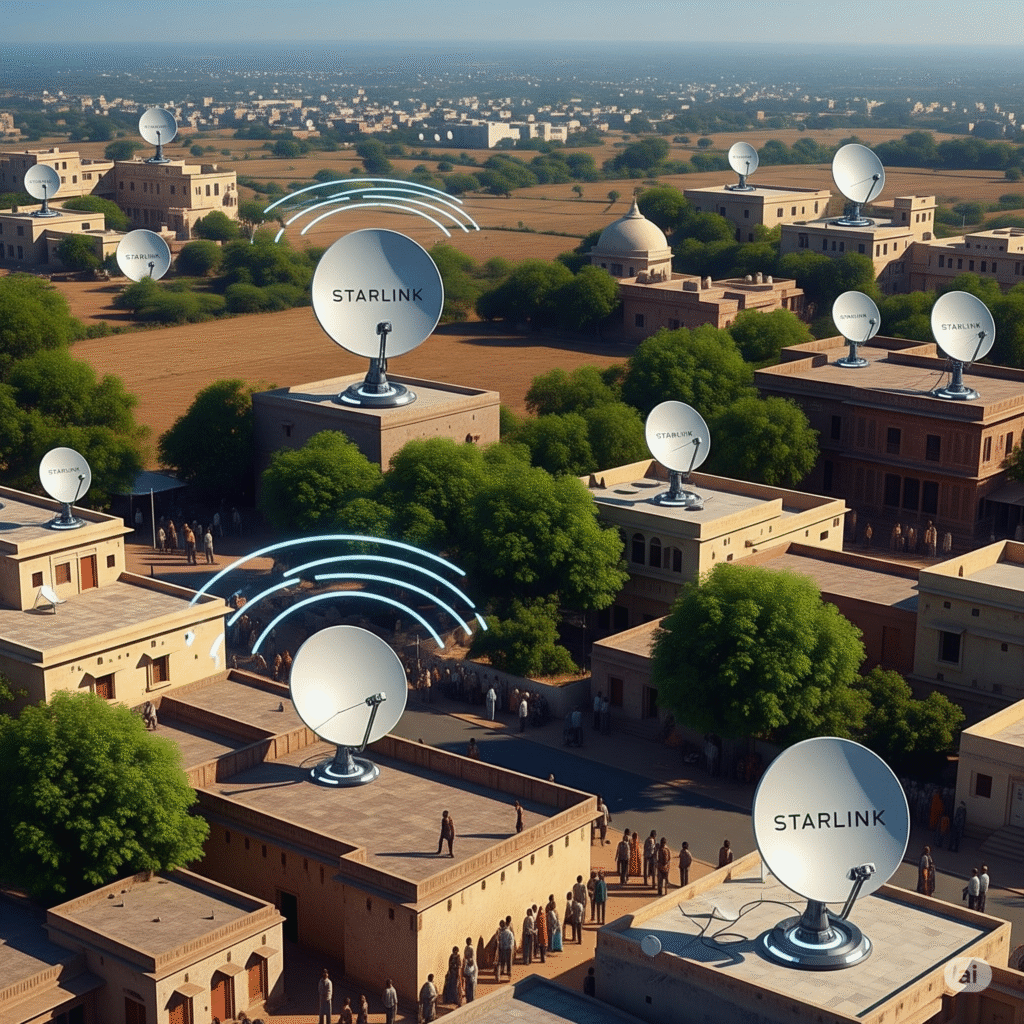Elon Musk Starlink Approved in India: Starlink is expected to start offering satellite internet in India by the end of the year or sometime in 2026. (Express Photo/Starlink)
Elon Musk’s Starlink Gets Green Light for India: Expected Prices, Plans & Rollout Timeline

Starlink, the satellite-based internet service from Elon Musk’s SpaceX, has secured final regulatory approval from the Indian government, paving the way for its official entry into the Indian broadband market. The service, already live in over 100 countries, offers internet access through a network of satellites and can operate anywhere with a clear view of the sky—making it ideal for even the most remote corners of India.
The Indian National Space Promotion and Authorisation Centre (IN-SPACe) has granted Starlink a five-year license to commercially operate in the country, valid until July 7, 2030. This makes Starlink the third company after OneWeb (by Eutelsat) and Reliance Jio to receive permission to offer satellite internet in India.
What Sets Starlink Apart?
Unlike traditional broadband providers such as Airtel, Vodafone Idea, ACT, and Hathway that rely on fiber optics and terrestrial infrastructure, Starlink uses a constellation of low-earth orbit (LEO) satellites to deliver high-speed internet. This architecture not only bypasses the need for ground infrastructure but also ensures reliable coverage in rural and underserved areas.
Compared to older satellite internet services (like those from Viasat or HughesNet), Starlink’s system offers better speeds and lower latency thanks to thousands of small satellites that use laser-based inter-satellite communication.
Launch Timeline and Infrastructure Hurdles
While regulatory approval is a major milestone, Starlink still needs to build the required ground infrastructure and secure spectrum allocation from the government. Additionally, it must pass security checks and performance trials under IN-SPACe guidelines. According to reports, the service may officially launch in India later this year or in early 2026.
Expected Costs and Subscription Plans
Starlink hasn’t yet disclosed official pricing for India. However, based on its global pricing model, here’s what potential users might expect:
- Standard Equipment Kit: Around $349 (~₹30,000)
- Portable Mini Kit: Priced globally at $499 (~₹43,000)
- Internet Speeds: Depending on location, speeds could range from 20 Mbps to 264 Mbps
As for subscription fees, introductory plans might start at around $10 (~₹900/month), while unlimited plans could be priced near ₹3,000/month. In neighboring Bangladesh, where Starlink launched in May, the setup cost is about ₹39,000, with monthly plans starting from ₹2,990.
TRAI has also proposed an additional monthly fee of ₹500 for users in urban locations, though it’s unclear if this will be enforced.
Starlink’s Growing Partnerships in India
Reliance Jio is reportedly partnering with Starlink to distribute its hardware through retail outlets and handle installation services. Bharti Airtel has also expressed interest in using Starlink’s network to expand its reach to remote parts of the country.
Competition from BSNL and Others

State-run telecom operator BSNL is also stepping into the satellite internet space with its upcoming “Direct to Device” initiative. This technology aims to bridge gaps between satellite and mobile networks using existing smartphones. In a successful test, BSNL used a regular Android device to connect to a Viasat satellite 36,000 km above Earth.
This innovation is aimed at improving connectivity in regions where conventional mobile networks struggle, offering an alternative that could compete with services like Starlink.





